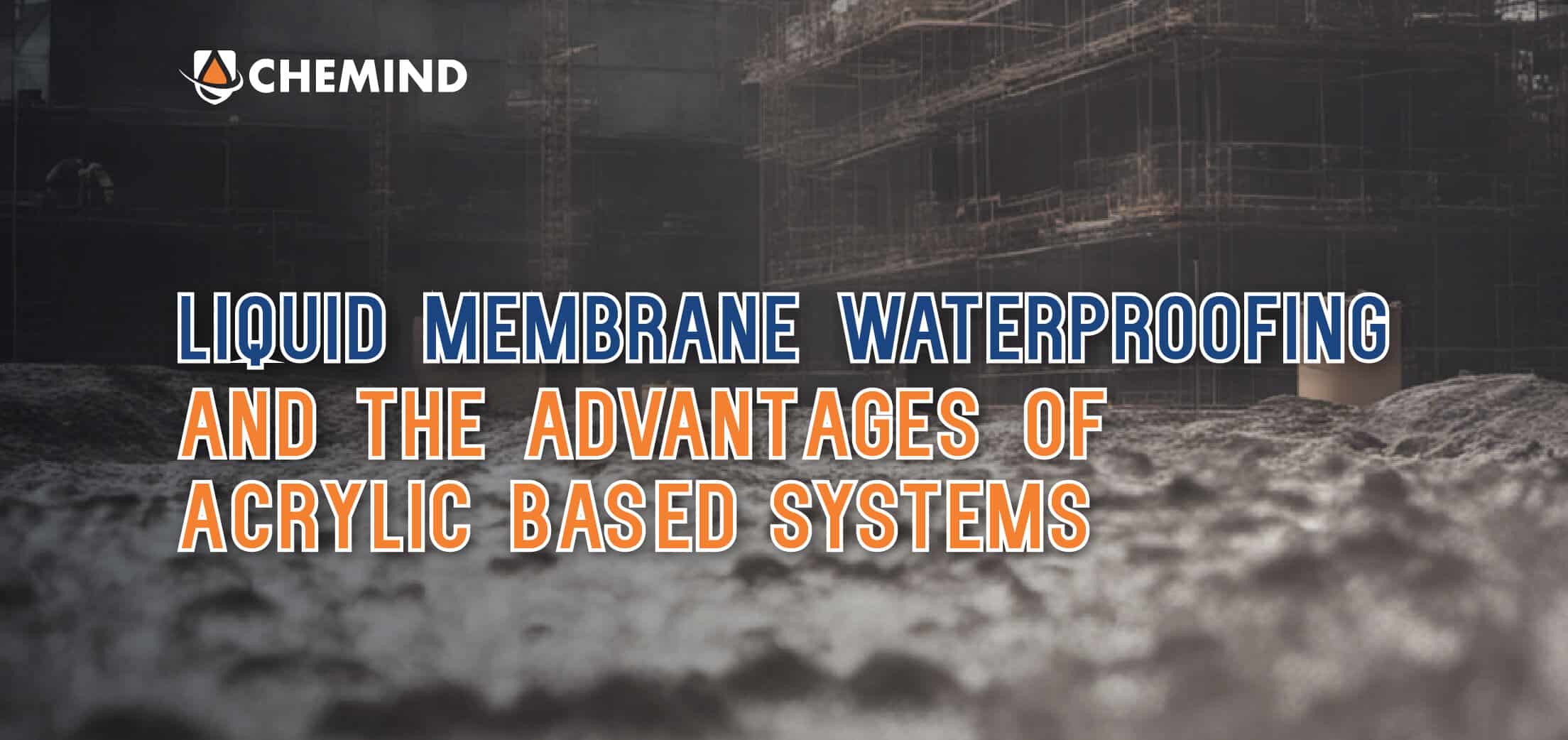Liquid Membrane Waterproofing and the Benefits of Acrylic-Based Systems

Waterproofing is an indispensable facet of contemporary construction, serving as a vital barrier against the intrusion of water into structures while safeguarding them from potential harm and deterioration. Various waterproofing methodologies are at our disposal, encompassing coatings, membranes, and hybrid systems that amalgamate diverse materials. Among these, the liquid membrane waterproofing technique stands out as one of the most efficient and adaptable approaches. Employing a liquid-applied coating, this method engenders a resilient waterproof barrier. Amid the array of liquid membrane waterproofing systems, those hinging on acrylic substrates warrant special recognition due to their array of merits, notably their exceptional resistance to elevated temperatures.
Understanding Liquid Membrane Waterproofing
Liquid membrane waterproofing is an architectural methodology that leverages a liquid-applied coating to craft a waterproof barrier across a multitude of surfaces, encompassing concrete, wood, metal, and beyond. The liquid medium, typically composed of polyurethane, polyurea, or acrylic constituents, solidifies into a continuous membrane, furnishing comprehensive protection against water infiltration. This approach enjoys widespread application within the construction domain, particularly concerning the waterproofing of roofs, balconies, foundations, retaining walls, and subterranean passages. The inherent pliancy of the liquid membrane renders it adept at bridging minute cracks, rendering it an efficacious solution across both novel construction initiatives and rehabilitation undertakings.
Advantages of Liquid Membrane Waterproofing
A key merit of liquid membrane waterproofing lies in its facile application. The fluidic nature of the waterproofing medium facilitates smooth, uniform dispersion, thus mitigating the temporal and labor-intensive demands characteristic of alternative waterproofing materials. Consequently, it emerges as a judicious, cost-efficient recourse for sizable projects.
In addition to its straightforward application, liquid membrane waterproofing boasts robust longevity. The seamless membrane engendered by the liquid medium forms a potent, impregnable bulwark against water ingress, thereby shielding structures from potential deterioration. Moreover, various iterations of liquid membrane waterproofing systems are designed to counteract ultraviolet radiation, extreme temperatures, and chemical exposure, thereby sustaining their effectiveness and operational integrity over the long haul.
Another salient attribute of liquid membrane waterproofing pertains to its malleability. The pliable nature of the liquid medium lends itself to application across an assortment of surfaces, including those endowed with curves and irregular geometries. Furthermore, the liquid membrane’s inherent flexibility engenders the capacity to accommodate surface expansion and contraction, curtailing the risk of fissures over time. This feature renders it an apt remedy for surfaces subject to dynamic alterations, encompassing scenarios where temperature fluctuations and vibrations are influential factors.
Beyond its utilitarian virtues, liquid membrane waterproofing also bestows an aesthetic enhancement to the waterproofed surface. Certain variants of liquid membrane systems yield a lustrous, translucent finish, thereby elevating the visual appeal of the surface. This augmentation renders it particularly suitable for high-visibility locales such as balconies and roof terraces.
Advantages of Liquid Membrane Waterproofing
A key merit of liquid membrane waterproofing lies in its facile application. The fluidic nature of the waterproofing medium facilitates smooth, uniform dispersion, thus mitigating the temporal and labor-intensive demands characteristic of alternative waterproofing materials. Consequently, it emerges as a judicious, cost-efficient recourse for sizable projects.
In addition to its straightforward application, liquid membrane waterproofing boasts robust longevity. The seamless membrane engendered by the liquid medium forms a potent, impregnable bulwark against water ingress, thereby shielding structures from potential deterioration. Moreover, various iterations of liquid membrane waterproofing systems are designed to counteract ultraviolet radiation, extreme temperatures, and chemical exposure, thereby sustaining their effectiveness and operational integrity over the long haul.
Another salient attribute of liquid membrane waterproofing pertains to its malleability. The pliable nature of the liquid medium lends itself to application across an assortment of surfaces, including those endowed with curves and irregular geometries. Furthermore, the liquid membrane’s inherent flexibility engenders the capacity to accommodate surface expansion and contraction, curtailing the risk of fissures over time. This feature renders it an apt remedy for surfaces subject to dynamic alterations, encompassing scenarios where temperature fluctuations and vibrations are influential factors.
Beyond its utilitarian virtues, liquid membrane waterproofing also bestows an aesthetic enhancement to the waterproofed surface. Certain variants of liquid membrane systems yield a lustrous, translucent finish, thereby elevating the visual appeal of the surface. This augmentation renders it particularly suitable for high-visibility locales such as balconies and roof terraces.
Acrylic-Based Liquid Membrane Waterproofing
Acrylic-based liquid membrane waterproofing comprises a subset of liquid membrane systems that employ an acrylic polymer as a foundational element to craft a waterproof shield. Renowned for their thermal stability and resistance to elevated temperatures, acrylic polymers assume an optimal role in waterproofing initiatives conducted within warm climatic zones. The polymer matrix integrated within the liquid membrane engenders a buffer between the treated surface and the external environment, affording protection against the rigors of extreme heat while assuring the continuity of waterproofing integrity.
Advantages of Acrylic-Based Liquid Membrane Waterproofing
A pivotal advantage inherent to acrylic-based liquid membrane waterproofing manifests through its resilience to high temperatures. The intrinsic thermal stability of the acrylic polymer, in conjunction with the attributes of the polymer matrix, collectively preserve the operational efficacy of the system even in the throes of exorbitant heat. This attribute positions acrylic-based systems as a superlative solution for waterproofing endeavors executed in locales characterized by elevated temperatures.
Contact Us
Chemind Industries Malaysia supplies waterproofing products and offering waterproofing services with its authorized applicators to solve all sort of water leakages and specialize in balcony, reinforced concrete, flat roof leakages. Contact us for free quotation and consultation for your projects.
